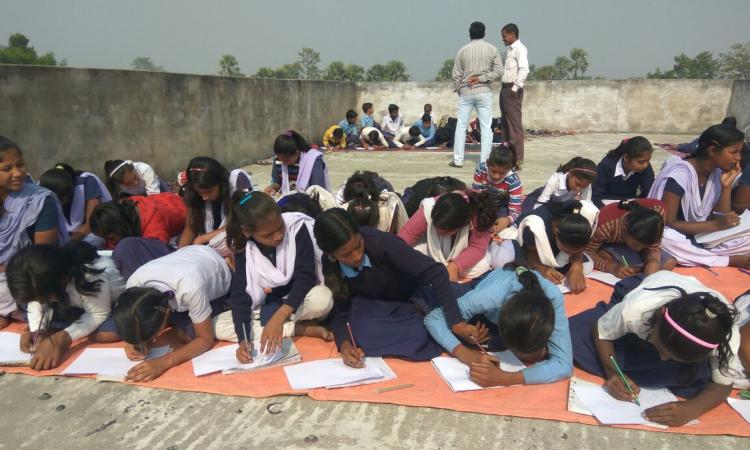
It is a rather unusual sight to see a big group of children pay rapt attention to the myriad of slides flashing on the screen. The topic at hand: safe drinking water. The animated and engaging voice of the resource person ensures the effective delivery of the didactic content.
How does water get contaminated? What are the diseases that stem from contaminated water? What is correct storage of water? What are the steps involved in handwashing? and, many such questions. Why, one may ask, are such sessions required, when this ‘gyaan’ or knowledge already forms a part of the syllabi? Well, firstly: prevention is better than cure; secondly, a practical and creative approach is necessary in order to generate long-term recall value, especially if the topic at hand is such an important one.
Explains Lalit Mohan Sharma, director, Adaptive Technologies, S.M. Sehgal Foundation, “We started organising school workshops on safe drinking water, about three months back, in Samastipur, Bihar. The target audience comprises students from class eight onwards. The selection of this target group lies in the simple reason that they help generate the word of mouth effectively amongst their peers, families and friends.” The class strength of each workshop is limited to a maximum of about 60 students which helps ensure an element of interaction.
The sessions, which are two hours in duration, include a presentation, Q & A session, role plays, discussions and debates--methodologies that ensure active involvement of children. The teaching methodology is kept interactive, using specially designed visuals (slides), for deeper impact and recall value.
Adds Sharma, “I remember the first time I conducted a workshop in the village. Though I have taught in the past, that was my first exposure after a long time. Of course, I was a bit nervous, but it all dissolved after the icebreaker sessions! The openness to learn, to understand, the desire to apply knowledge and the motivation of the students was commendable. It served as a huge source of encouragement for me, and the team too. Soon students and villagers greeted me with a new title--sir who taught us about safe drinking water--a rather long one but stirring enough. It helped me realise that the objective of sustainable recall value was met. What more can one ask for?”
In order to further strengthen the knowledge shared, the workshops were succeeded by painting and essay competitions, which were open to all. The participation has always been enthusiastic, says Sharma with a smile. Principals, teachers, students and parents all feel that the encouragement to engage the children for a social cause is essential, as this ensures participation and mobilisation at various levels. “And, of course, there are prizes to be won: dictionaries, vocabulary books, examination boards, colouring sets and so on. Perhaps, that is the added attraction,” adds Sharma with a laugh.
Community mobilisation and participation is one of the most important pillars of a healthy democracy, and students are the pillars of a better tomorrow. A combination of both these important elements can catalyse a brighter future for one and all.
The author is the communications and media consultant, S.M. Sehgal Foundation